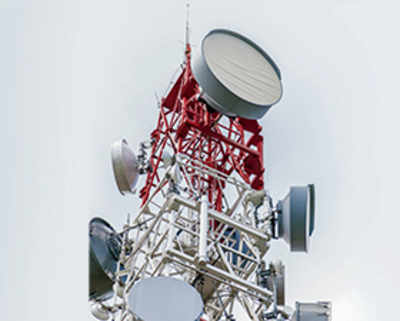Residents won’t let cell cos eat open spaces

Spires will come up in Bandra Bandstand, Byculla Zoo, Shivaji Park, KEM Hospital; activists demand that govt withdraws plan.
A significant number of 4G towers that are to be installed by mobile phone companies in the city will devour large slices of Mumbai’s few remaining open spaces. The 1,160 locations shortlisted for the towers to be erected - a proposal that the Brihanmumbai Municipal Corporation has cleared - include KEM Hospital, Bandra Bandstand, Byculla Zoo, Shivaji Park, and Priyadarshini Park.
BMC officials said installation of the towers, each 25 metres tall, has commenced in 48 gardens in the city.
Chief minister Devendra Fadnavis had informed the state assembly in December last year that per capita allocation of open space in the city would be increased from 1 square metre to 2. A month later, the BMC introduced the concept of ‘multipleuse open spaces’ in its Development Plan 2034 - it allows the BMC to appropriate swathes of land.
Activists are opposed to the plan; they have forced the BMC to reverse its decision to install some towers. Recently, one was removed from Almeida Park in Bandra (West) following protests by residents led by Congress corporator Asif Zakaria. “It’s frightening to imagine such mobile towers in gardens, spewing out radiation,” Zakaria said.
The BMC clarified that, of the 48 parks at which installation work had begun, the decision to erect towers at four had been reversed “as they did not meet prescribed norms”. The city improvements committee is responsible for clearing the project.
While the BMC is yet to clarify what prompted it to withdraw permission at these locations, citizens’ groups have charged that the towers emit harmful radiation - a claim that is yet to be scientifically tested.
Reliance Jio Infocomm, the company that is setting up the towers, issued a clarification in this regard through a spokesperson: “These towers are specially designed keeping in mind the safety of community at large. Area below the towers will get negligible radiation with no health hazard. Jio towers have a very small footprint and are installed in locations approved by BMC, like unused corners of the park, traffic islands, dump yards etc. They mix well with the city infrastructure and can be used for various community services: Street lighting, mounting safety cameras and public messaging, which will also help in making public places safe.”
Activists remain unconvinced - some have proposed that the BMC install towers on its own premises. “We have approached the government to discuss the mobile tower policy. We have also sought an explanation from the Department of Telecommunications about the norms framed for permissible radiation levels,” said anti-mobile tower activist Prakash Munshi. “But the authorities have been delaying in replying to us. We will continue our fight till the government brings down the permissible radiation limits.”
A significant number of 4G towers that are to be installed by mobile phone companies in the city will devour large slices of Mumbai’s few remaining open spaces. The 1,160 locations shortlisted for the towers to be erected - a proposal that the Brihanmumbai Municipal Corporation has cleared - include KEM Hospital, Bandra Bandstand, Byculla Zoo, Shivaji Park, and Priyadarshini Park.
BMC officials said installation of the towers, each 25 metres tall, has commenced in 48 gardens in the city.
K-West ward - which comprises areas like Andheri (West), Lokhandwala and Juhu - will enclose the highest density of towers; sources in the city corporation said 83 such spires are likely to take root in that neighbourhood alone. Farther north, in R-South ward’s Kandivali, Charkop and surrounding regions, 81 towers will rise; many of them in playgrounds and gardens.
Chief minister Devendra Fadnavis had informed the state assembly in December last year that per capita allocation of open space in the city would be increased from 1 square metre to 2. A month later, the BMC introduced the concept of ‘multipleuse open spaces’ in its Development Plan 2034 - it allows the BMC to appropriate swathes of land.
Activists are opposed to the plan; they have forced the BMC to reverse its decision to install some towers. Recently, one was removed from Almeida Park in Bandra (West) following protests by residents led by Congress corporator Asif Zakaria. “It’s frightening to imagine such mobile towers in gardens, spewing out radiation,” Zakaria said.
The BMC clarified that, of the 48 parks at which installation work had begun, the decision to erect towers at four had been reversed “as they did not meet prescribed norms”. The city improvements committee is responsible for clearing the project.
While the BMC is yet to clarify what prompted it to withdraw permission at these locations, citizens’ groups have charged that the towers emit harmful radiation - a claim that is yet to be scientifically tested.
Reliance Jio Infocomm, the company that is setting up the towers, issued a clarification in this regard through a spokesperson: “These towers are specially designed keeping in mind the safety of community at large. Area below the towers will get negligible radiation with no health hazard. Jio towers have a very small footprint and are installed in locations approved by BMC, like unused corners of the park, traffic islands, dump yards etc. They mix well with the city infrastructure and can be used for various community services: Street lighting, mounting safety cameras and public messaging, which will also help in making public places safe.”
Activists remain unconvinced - some have proposed that the BMC install towers on its own premises. “We have approached the government to discuss the mobile tower policy. We have also sought an explanation from the Department of Telecommunications about the norms framed for permissible radiation levels,” said anti-mobile tower activist Prakash Munshi. “But the authorities have been delaying in replying to us. We will continue our fight till the government brings down the permissible radiation limits.”
GALLERIES View more photos











